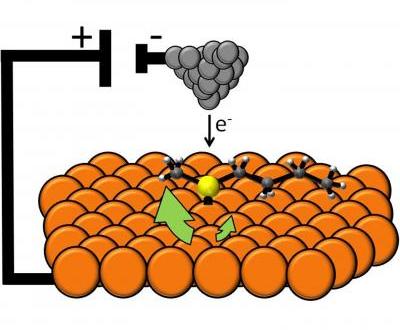Scientists at the School of Arts and Sciences at Tufts University have designed a single molecule electrically-driven motor, first-of-its-kind device with a size of only 1 nm diagonally.
 Tufts University chemists have developed the world's first single molecule electric motor
Tufts University chemists have developed the world's first single molecule electric motor
This achievement could lead to the development of a new range of devices for applications ranging from engineering to medicine. E. Charles H. Sykes, who serves as associate professor of chemistry at Tufts University, and his team have used a low-temperature scanning tunneling microscope (LT-STM), which utilizes electrons in place of light to view molecules, to control the electric molecular motor.
The researchers supplied an electrical charge to a butyl methyl sulfide molecule positioned on a conductive copper surface by utilizing the microscope’s metallic tip. This molecule comprises sulfur and has hydrogen and carbon atoms on both sides similar to two arms with one atom on one side and four carbon atoms on another side. The carbon chains present in the molecule can rotate freely around the sulfur-copper bond. The researchers found that the molecule’s rotation can be controlled by monitoring its temperature. At -450 °F or 4º K, they were able to trace all the motor’s rotations and study the data. As it rotated rapidly at higher temperatures, it was difficult to control and measure the motor’s rotation.
Sykes stated that better understanding of the temperatures required for the operation of these motors would enable them to be used in medical and sensing devices that have minute pipes. Fluid friction against the pipe walls increases at these minute scales and arranging molecular motors along the wall can drive the flow of fluids, he said. The combination of electrical signals and molecular motion could also make tiny nano-sized gears in electrical circuits that can be used as minute delay circuits in devices such as cell phones, he added.